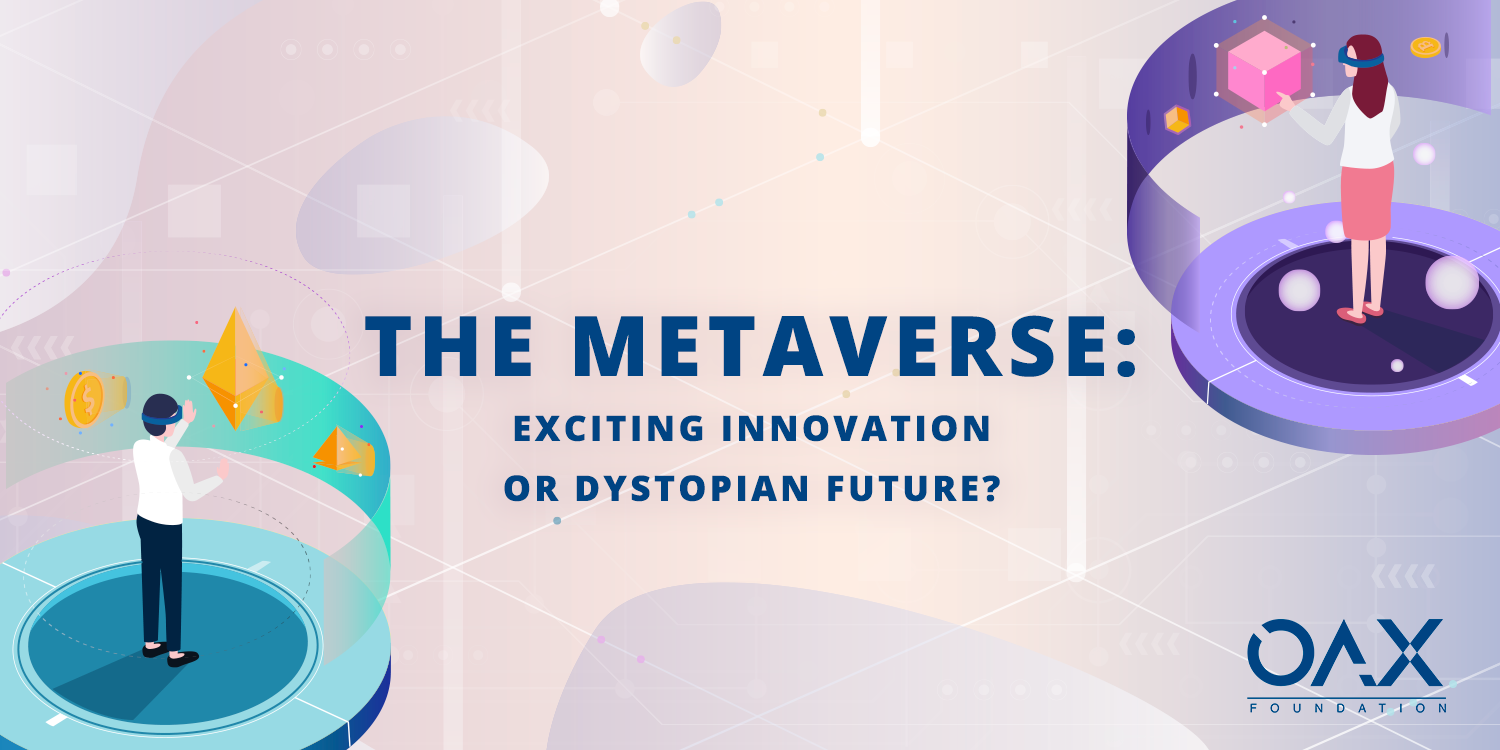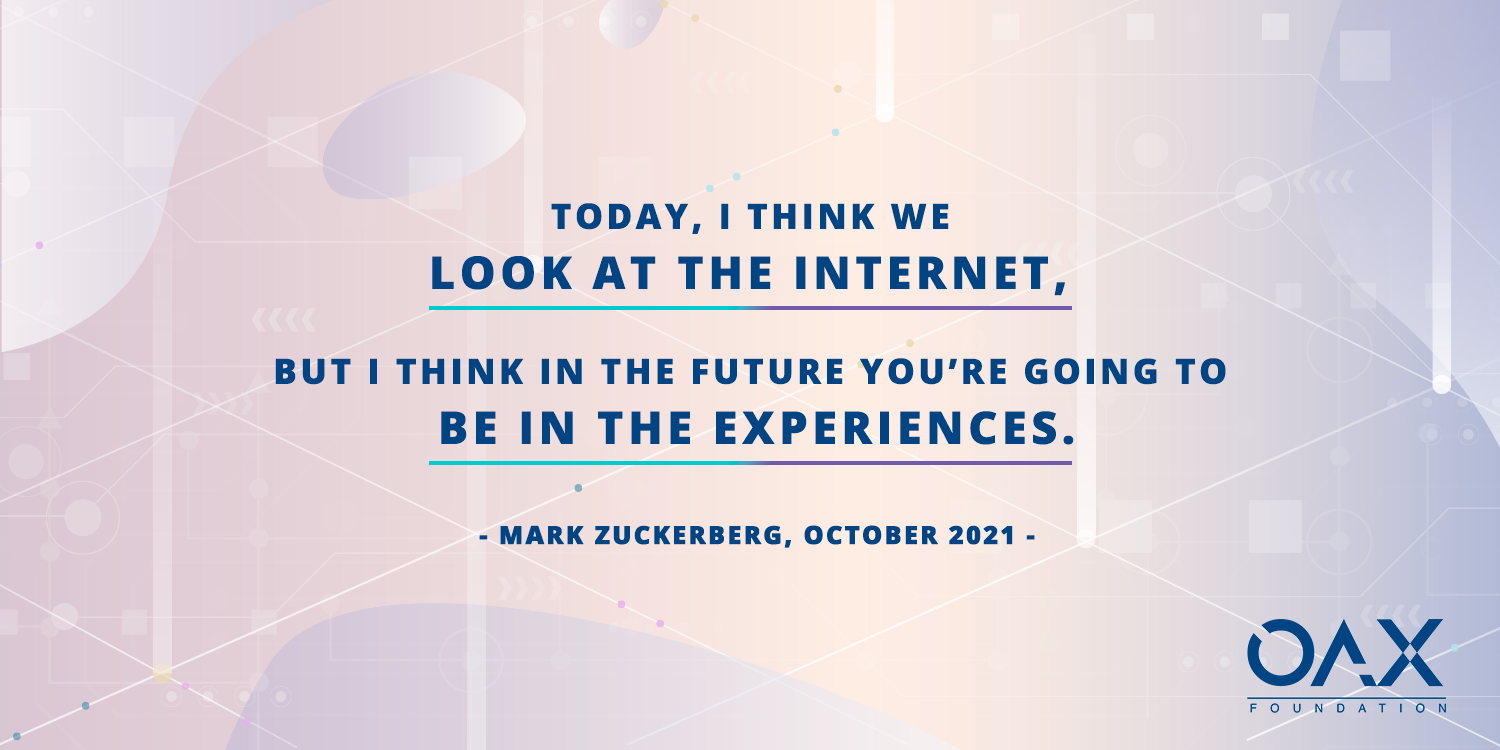
Exploring the Future of the Metaverse
What does your version of Metaverse look like?
Do you imagine yourself walking through Second Life as you attend a conference or does it simply operate as a more efficient and better indexed catalogue or e-store? Perhaps starting work each morning, instead of powering up the multiple screens at your office desk, you may be reaching for the VR headset that will transport you not only to a larger screen but a whole universe. Or maybe the world of Ready Player One will be brought to life and you’ll end up as one of the players within the movie.
The spike in Google Search Trends coincided with Facebook’s rebranding announcement, which was then shortly followed by Microsoft’s announcement; thereby propelling the term “Metaverse” to dinner table conversations around the world. It seems to be a universally agreed on belief that the concept of Metaverse will become the next big thing, and the last 10+ years of discussion on cryptocurrencies are just the precursor to one of the key elements within this metaverse– but the question of what this space will look like is still up to speculation.

Source: Google Trends
The world of gaming fits nicely with the initial metaverse concept and NFTs. The concepts all piece together so efficiently and collaboratively that it’s no surprise that gaming companies should be one of the first industries to make full use of this space.
Some of the key players in the market now such as Axie Infinity, The Sandbox and Decentraland have gotten massive interest from the market. The Sandbox closed a $93M Series B round of funding just two short weeks ago and are looking to launch their Metaverse Alpha at the end of the month. Decentraland just sold a virtual real estate plot for a record $2.4 million on November 24. But while it might seem like these companies are just at the right place at the right time, it’s important to note that their development began years prior to this sudden interest and are coming to fruition now.

Within this gamified space lies an element of imagination; appearing as a warrior goddess to a plushy dino, the possibilities of one’s avatar is limitless. If there’s this level of anonymity that allows us to change our shape and form, it seems natural that this approach will also require a decentralized approach to this space as so often anonymity and decentralization have gone hand-in-hand within the digital asset space.
Yet it seems likely for the Facebook’s (ahem… Meta’s), Microsoft’s, and mainstream consumer brands of the world that will be looking to capitalize on the metaverse space, accountability and regulatory enforcement will require a certain centralized approach where one’s online persona reflects the real-life individual (or brand).
If the metaverse of the future operates separately platform by platform, we will face similar dilemmas of cross chain compatibility. We must consider whether we will be hopping from metaverse to metaverse as we do social media platforms or whether it will eventually be unified into one agnostic platform. Will governments also step in eventually in effort to manage the online space or should the ideal approach of this hypothetical metaverse (as some believe) best be decentralized? These considerations all add layers of intricacies that will make it infinitely more complex beyond the technological development and commercialization of the space.
We’re only at the very tip of the iceberg in our imagination of what the metaverse will look like in the future, but undoubtedly in the months and years to come we will be debating on the merits and direction of the space as we work together to figure out what a digital future will look like.


